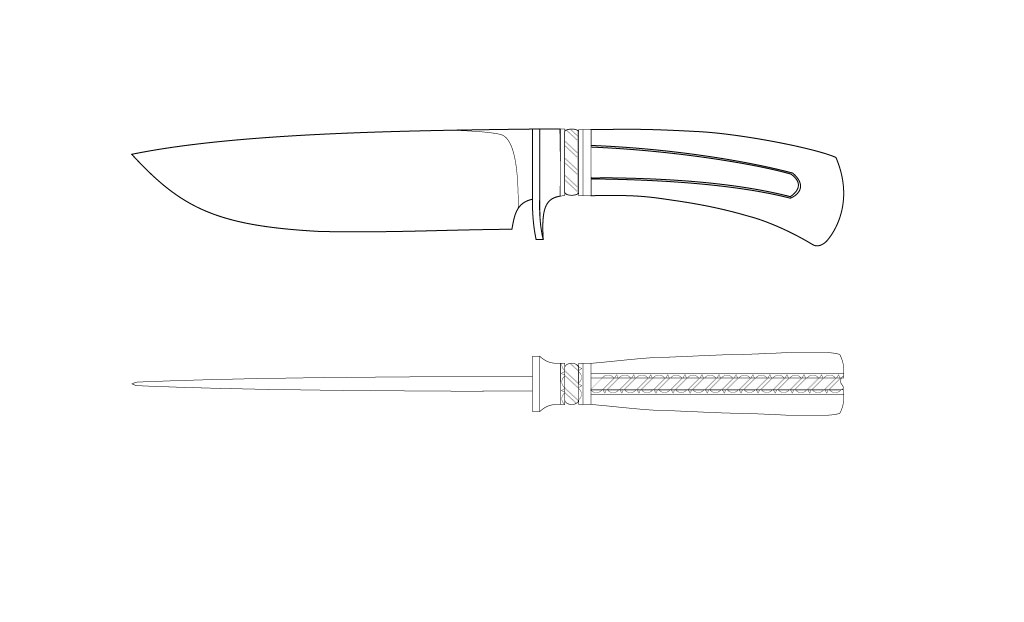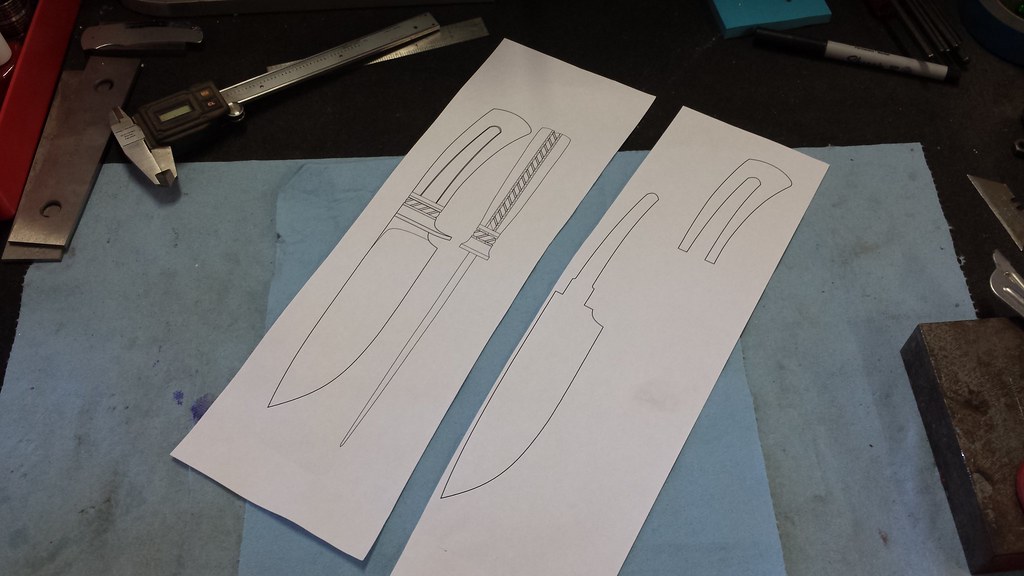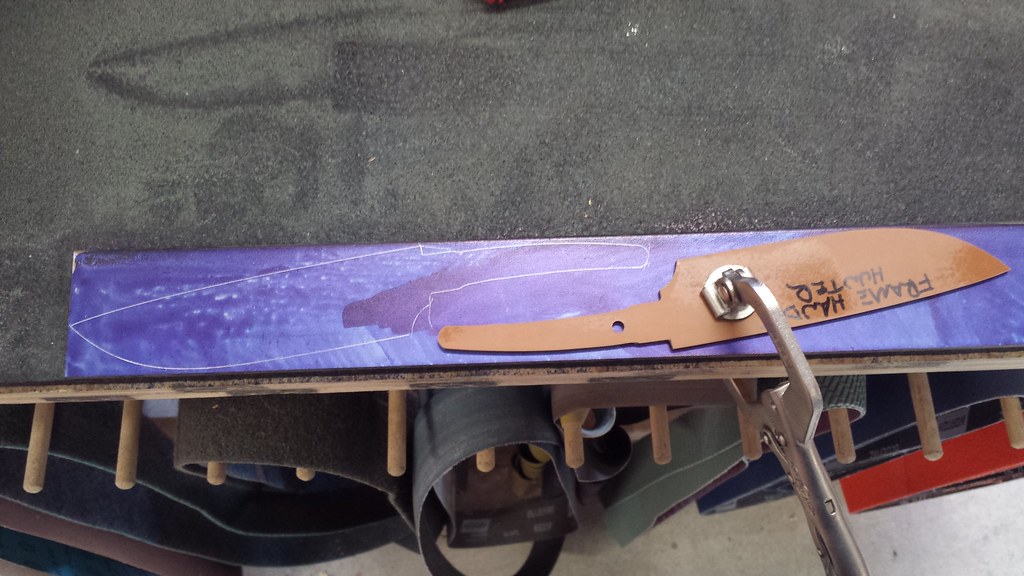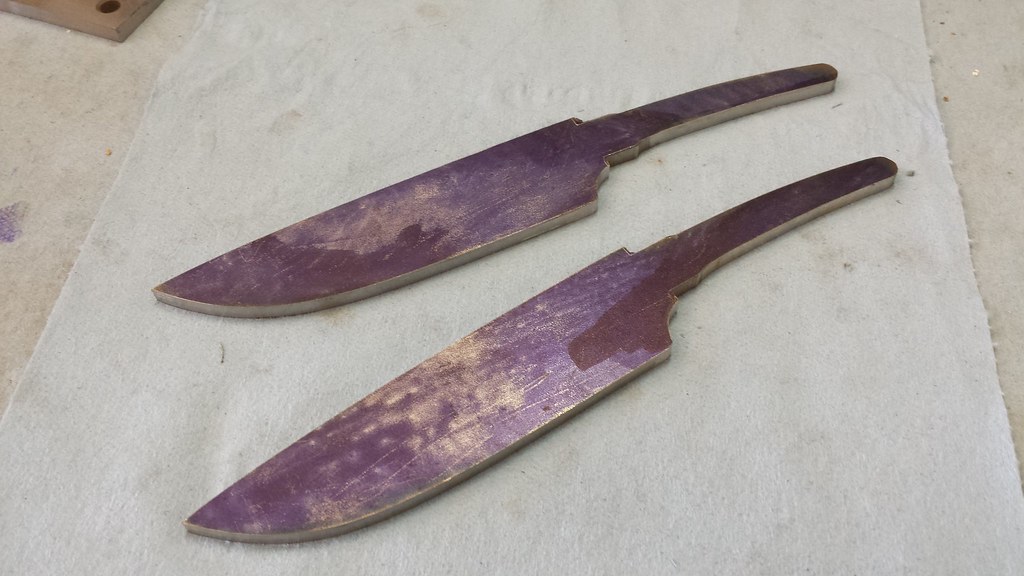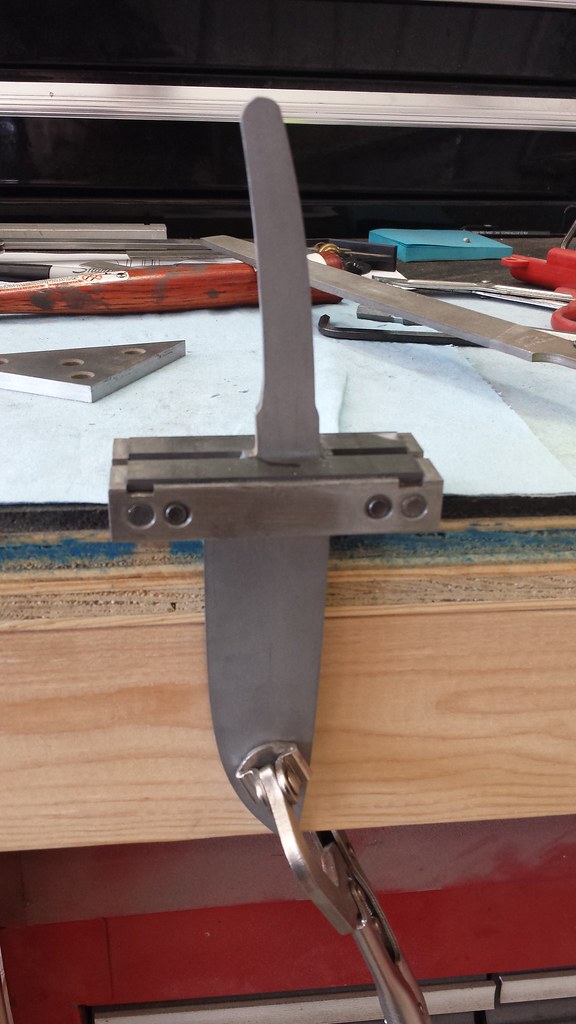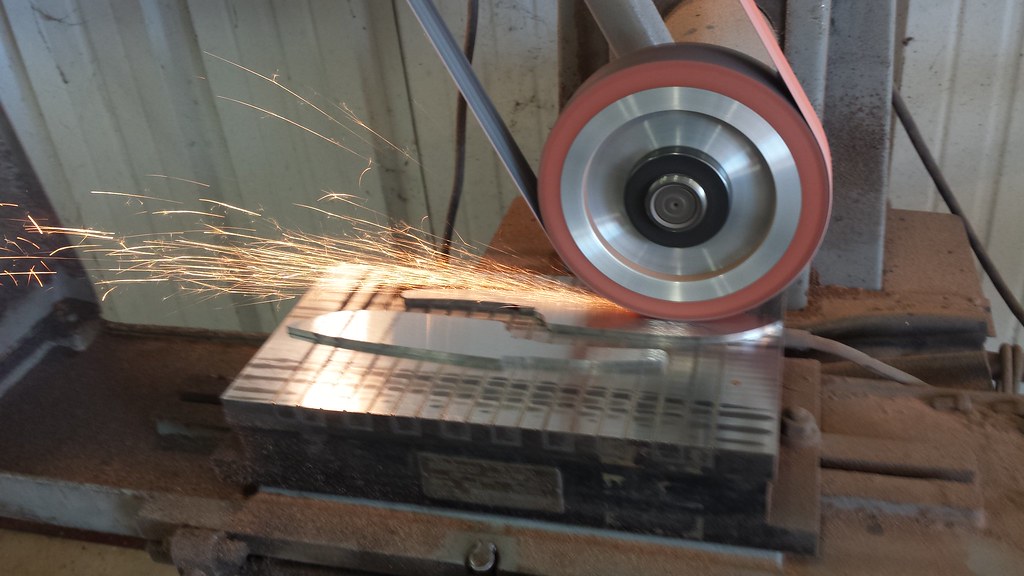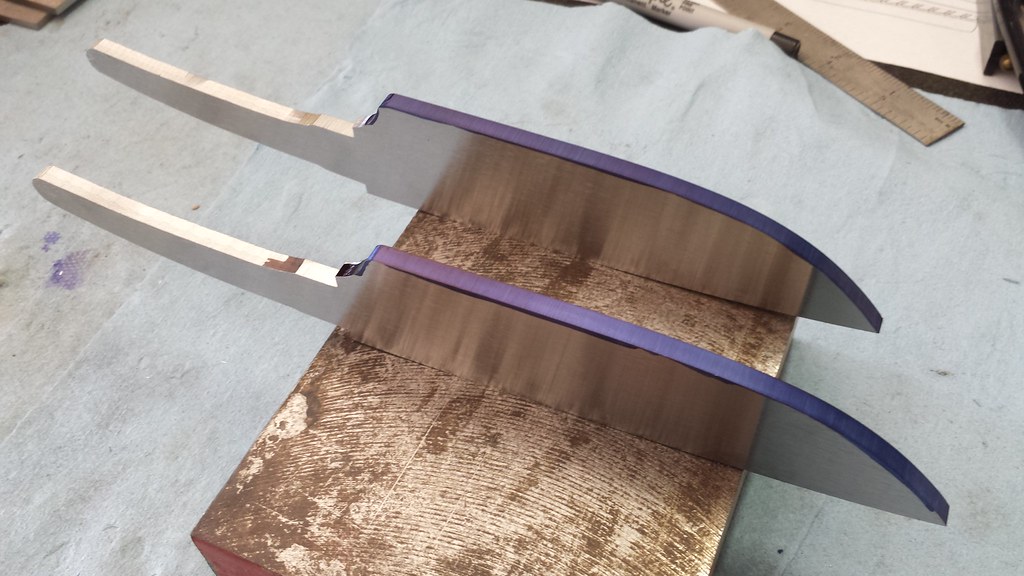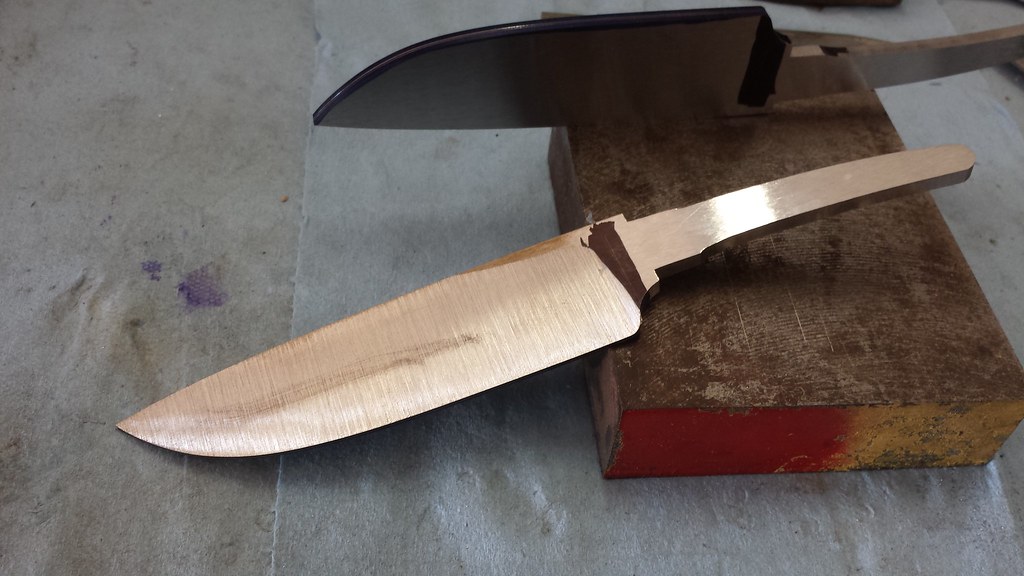- Joined
- Dec 5, 2013
- Messages
- 1,180
So I got a phone call about a week after the Little Rock show from a very nice gentleman I met there. He was a retired Army Ranger now in his seventies but we had the common connection and really hit it off. He said he really like how far I've come in such a short time and would like to challenge me to push my limits. He gave me some basic guidelines; it should be a drop-point hunter, it should have stag on the handle and it should have a hamon. Other than those requirements, everything was up to me.
So, there are a lot of new things for me in this knife and I feel up to the challenge. I've ordered up some W2 which I've never worked with so that will be fun. I've spent a good deal of time brainstorming and drawing and have come up with a plan to make a frame handle which is also something new for me. I'm going to do a stack on the guard and I'm planning to put liners between the scales and the frame. I have to admit, a lot of my inspiration for this knife comes from Bruce Bump's and Kyle Royer's knives. Hopefully I won't embarrass myself.
This will be a real-time WIP so it may move slowly at times. I have a few more knives to finish before I can really dive into this one but, I have some drawings that I can share. I'm still deciding on blade profile but, leaning toward one of the bottom two. Overall length will be about 9.75". This will not be an authoritative build, it will be more of a "Can he pull it off?" daytime drama. Comments are welcome.
Bob
 STAG-HUNTER by Ranger_Bob, on Flickr
STAG-HUNTER by Ranger_Bob, on Flickr
So, there are a lot of new things for me in this knife and I feel up to the challenge. I've ordered up some W2 which I've never worked with so that will be fun. I've spent a good deal of time brainstorming and drawing and have come up with a plan to make a frame handle which is also something new for me. I'm going to do a stack on the guard and I'm planning to put liners between the scales and the frame. I have to admit, a lot of my inspiration for this knife comes from Bruce Bump's and Kyle Royer's knives. Hopefully I won't embarrass myself.
This will be a real-time WIP so it may move slowly at times. I have a few more knives to finish before I can really dive into this one but, I have some drawings that I can share. I'm still deciding on blade profile but, leaning toward one of the bottom two. Overall length will be about 9.75". This will not be an authoritative build, it will be more of a "Can he pull it off?" daytime drama. Comments are welcome.
Bob
 STAG-HUNTER by Ranger_Bob, on Flickr
STAG-HUNTER by Ranger_Bob, on Flickr
